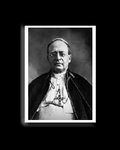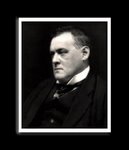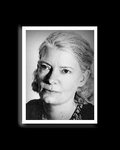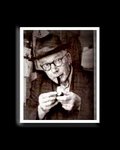Firms owned by staff have beaten the FTSE all-share. So why aren't there more?
Antoinette Odoi
Monday August 20, 2007
The Guardian
Imagine working for a company that provides heavily subsidised hotel accommodation in Dorset's Brownsea Castle and discounts of up to 50% on theatre tickets. But much better than that, it makes you a partner, entitling you to a share of the profits.
This is a reality for thousands of John Lewis partners, who received an 18% bonus this year, equivalent to nine weeks' full pay. This year profit before tax at the partnership was £319m, with £164m being reinvested. The rest, £155m, was shared between the partners.
John Lewis Partnership is probably the best known successful employee-owned company. Its 68,000 permanent staff own its 26 John Lewis department stores, 185 Waitrose supermarkets, online catalogue John Lewis Direct, three production units, a farm and Greenbee, a tickets, travel and insurance service. The whole group had a combined turnover of nearly £6bn last year.
Despite its success, employee-owned companies are only slowly emerging as a credible business model.
Data from Equity Incentives, a company providing a share plan service to private and quoted companies, reveals the monetary benefits. It set up an employee ownership index in 1992 to see if employee-owned companies could outperform the average quoted company. It shows £100 invested in the index would have been worth £349 by the end of June 2003; the same £100 invested in the FTSE all-share index would only have grown to £161.
The Employee Ownership Association carried out a survey in 2005 that revealed that 72% thought staff worked harder under a co-ownership structure, 81% said they took more responsibility, 49% thought competitiveness was enhanced and 44% confirmed profits were higher.
Despite this, co-owned companies make up only an estimated 2% of the economy, or £25bn in annual turnover. But Patrick Burns, executive director, sees a strong case for them.
Extra mile
"You get a remarkable level of employee involvement and people are prepared to go the extra mile. People feel their companies are more productive, and the companies are very sustainable," he says.
Director of personnel at the John Lewis Partnership, Tracey Killen, says: "The great strength of the partnership's model is that employees have a real stake in the business ... co-ownership allows the partnership to take a long-term view, because we do not have to answer to external shareholders who are usually seeking quick returns."
A John Lewis spokesman adds: "In the 1990s, performance was quite sluggish. If we were a listed company shareholders would have been asking questions. We invested a lot of money ... but we didn't see the consequences until four, five, six years down the line."
The investment seems to have worked. John Lewis has come first in the Which? survey of the nation's favourite retailers. It has now made a £500m investment in 11 new stores to be built within 10 years.
Loch Fyne Oysters is another example. The company (separate from the Loch Fyne restaurant chain, which was sold to Greene King for £68m last week) turns over £10m a year. It was bought by more than 100 staff in 2003 after they borrowed £2m from the Baxi Partnership, an organisation which helps business become employee-owned through a trust structure, and about £1m from the Royal Bank of Scotland.
Virginia Sumsion, marketing manager at Loch Fyne Oysters, says co-ownership "gives employees a sense of security" but the system requires participation which has not always been easy.
"[Co-ownership] ... means [middle management] has to get employees more involved. In the early stages it's quite difficult to know what to ask." But after the teething problems, she says, "now the culture of the company has become more open".
Fig leaf
Mark Constantine, chief executive of Lush, the natural cosmetics shop, is considering co-ownership. While he stresses the idea is still in the embryonic stage, he wants the 5,500 employees who have contributed to Lush, which has a turnover of £145m a year, to get something back.
He says one reason would be to prevent a buyout from a company that doesn't share Lush's ethics, including its stance against animal testing, but merely wants it as an "ethical fig leaf". "If a business goes public it has to consider its shareholders above all else. I realise the people you [can] trust most are your own staff."
Shared ownership has its critics. Some doubt the ability to make the right decisions and make them quickly, and the level of risk that can be taken with so many people dependent.
But Mr Burns counters: "It's true that some companies do find it difficult to make decisions, but it's a misconception that everybody has to be consulted to make every single decision."
Mr Constantine also dismisses the worries: "Decision-making can become slow at any time. It's about the quality of the management."
But if the benefits are so clear, why is co-ownership not more widespread?
Jonathan Bland, chief executive of the Social Enterprise Coalition, says Britain has a very "thin" model of business. The reality, he says, is that there are "a range of fantastic business models but a real ignorance about the fact we can use them and be successful".
Mr Burns lays some of the blame on business advisers. "Owners looking to sell their business will hardly ever be advised to sell to their own employees. Very few are aware this option is there."
When Gordon Brown scrapped tax relief on company contributions to employee benefit trusts in 2003 it made it more difficult for companies to be trust-owned, he says.
"It was really aimed at tax-avoiders, and [the government] threw out the baby with the bathwater."
John Alexander, managing director of the Baxi Partnership, agrees. Having been in operation for seven years and helped eight companies with 700 staff become employee-owned, he feels employee-ownership could be given a boost if the government brought in "capital gains tax relaxation for anyone who sells into a co-owned structure".
"If there were a nil-rate band for businesses transferred into a co-owned structure, " he says, "it would be brought to the attention of every single accountant and lawyer in the country."
Case studies
Wilkin & Sons
Jam-maker Wilkin & Sons shows that adopting an employee-ownership structure does not mean sacrificing good organisation and profit. Businesses that have adopted ownership schemes involving their employees benefit from staff loyalty and improved work ethic.
Twenty-five years ago, the business behind Tiptree conserves changed its structure and now its 240 employees hold just under 50% of the 122-year-old company via an employee benefit trust. The rest is owned by the founding family members and some minority shareholders.
The company distributes shares annually according to length of service to everyone from the director to the assistants on the shopfloor. When workers retire, Wilkin buys their shares back and redistributes them among the rest of the employees.
Tim Came, Wilkin's sales and marketing manager, says: "We didn't want a predator to approach the business, asset-strip, close the factory and take it elsewhere without regard for the family's work here for generations."
Peter Wilkin, great grandson of the founder Arthur Charles Wilkin, is maintaining the family's interest in the business as chairman and joint managing director. The firm last year had a turnover of £16.5m.
It has also diversified and responded to market demands, introducing its organic Christmas pudding in 1999 and organic chilli mustard in 2003.
Sunderland Home Care Associates
Sunderland Home Care Associates began in 1994 when Margaret Elliot decided to set up a group in the Sunderland area that would provide personal care services to people in their own homes.
"I saw an ad in the local paper for expressions of interest to provide home care and applied," she says. Social services gave the company an initial £50,000 but the company has operated independently since then, and now the Sunderland branch has an annual turnover of £1.8m. The company, which bids for contracts from local social services organisations, has 200 staff in Sunderland and has expanded with operations in North Tyneside, Newcastle and Manchester.
The original Sunderland operation became employee-owned in 2002 because Mrs Elliott felt that giving employees a financial stake would ensure the highest standard of care.
Shares are issued annually to be held for a minimum of five years, but no employee can own more than 2% of the business.
Other co-ownership firms:
Arup Group (100% owned in trust): a global design and business consulting firm. The group has 19 UK offices with 2,500-3,000 staff in Britain, in addition to 9,000 staff working in more than 37 countries. It became employee-owned in 1979.
Compton Fundraising Consultants (wholly owned): group of fundraising consultancies catering for not-for-profit organisations. It was founded more than 40 years ago and has always been employee-owned but to varying degrees.
St Luke's (wholly owned): advertising and communications company bought by its employees in 1995. It has about 60 employees.
School Trends (100% owned in trust): focusing on the supply of school uniforms, it was set up in 1988 and moved to employee ownership status in 2004. It has approximately 150 employees.
Thursday, August 23, 2007
Subscribe to:
Post Comments (Atom)
















1 comment:
Let me be the first heartless capitalist to say I applaud this business model and I hope to see more employee owned firms in the future!
Post a Comment